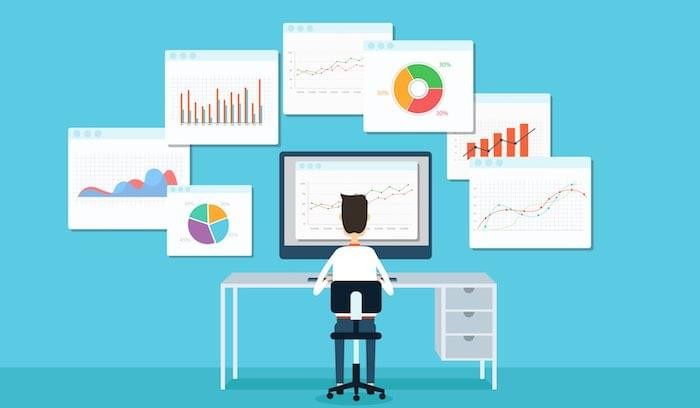How POS Reports Can Reveal Hidden Business Opportunities

In today’s competitive business landscape, success depends on more than just selling great products — it’s about making informed decisions based on accurate, real-time data. One of the most valuable yet often underused tools in this process is the Point of Sale (POS) system. Modern POS systems do far more than handle sales transactions; they collect and organize detailed information about every aspect of your business.
Through comprehensive POS reports, business owners can uncover hidden opportunities — insights that can lead to higher profits, better inventory control, improved customer satisfaction, and overall business growth. Let’s explore how POS reports can reveal these hidden gems and help you make smarter, data-driven decisions.
1. Identifying Top-Performing and Underperforming Products
Every sale you make tells a story, and your POS system records it. POS reports make it easy to see which products are selling best and which items are sitting on the shelves.
By analyzing sales by item or category, you can identify your most profitable products, seasonal trends, and low-performing stock. This information helps you make informed purchasing decisions — stocking up on high-demand products while reducing investment in slow movers.
For example, a coffee shop might discover that its iced lattes sell 30% more than hot coffees during summer. By promoting cold beverages and introducing seasonal flavors, the business can boost sales even further.
In this way, POS data helps you focus on what truly drives your revenue — uncovering hidden opportunities for profit optimization.
2. Understanding Customer Preferences and Behavior
Your customers are the heart of your business, and your POS system provides valuable insights into their habits. POS reports can reveal who your best customers are, what they buy most frequently, and how often they return.
By analyzing customer purchase history and sales trends, you can tailor your marketing campaigns to target specific groups. For instance, if your POS data shows that a group of customers frequently buys gluten-free products, you can design loyalty rewards or promotions around those preferences.
Additionally, understanding when your customers shop — such as busy hours or slow days — allows you to optimize staffing, promotions, and even pricing strategies to match demand. These data-driven insights transform guesswork into targeted growth strategies.
3. Improving Inventory Management
Poor inventory control is one of the biggest reasons businesses lose money. Overstocking ties up capital, while understocking leads to missed sales. POS reports make it easier to find the right balance by providing real-time insights into inventory levels and turnover rates.
By tracking how quickly products sell, you can adjust reorder points and prevent both shortages and excess inventory. This ensures your shelves are always stocked with what your customers actually want.
Moreover, detailed POS reports can expose hidden inefficiencies — such as items that are consistently returned, wasted, or damaged. Addressing these issues not only reduces costs but also improves profitability over time.
4. Tracking Employee Performance
Your team plays a crucial role in customer satisfaction and sales performance. POS reports can help you evaluate individual employee performance based on sales data, transaction accuracy, and upselling success rates.
For example, if one staff member consistently sells more add-ons or upgrades, you can identify what techniques they’re using and share those strategies with the rest of the team. Conversely, if errors or refunds are frequently linked to a specific employee, additional training might be needed.
This data-driven approach creates a culture of accountability and continuous improvement — ultimately leading to better service and higher revenue.
5. Spotting Seasonal and Market Trends
POS reports give you the ability to track performance over time, helping you identify seasonal patterns and market shifts. Whether it’s a surge in gift sales during the holidays or an increase in cold beverage sales in summer, recognizing these patterns early allows you to plan smarter promotions, stock adjustments, and staffing schedules.
Beyond seasonal changes, POS data can also highlight emerging trends in customer behavior — for instance, a growing interest in eco-friendly products or digital payment preferences. Acting on these insights before your competitors do can position your business as a market leader.
6. Forecasting and Strategic Planning
POS reports don’t just show what’s happening — they help predict what’s likely to happen next. By analyzing historical sales data, you can forecast future demand and set realistic growth goals.
For example, if sales consistently increase by 10% each quarter for a specific product line, you can confidently invest in expanding that category or launching complementary items. Data-backed forecasting reduces risk and helps you allocate resources more effectively.
Final Thoughts
Your POS system is more than just a tool for processing transactions — it’s a goldmine of insights waiting to be explored. By analyzing POS reports, you can uncover hidden business opportunities that might otherwise go unnoticed. From identifying best-selling products to understanding customer behavior and optimizing operations, POS data empowers you to make smarter decisions that fuel growth.
In today’s data-driven world, businesses that harness the full power of POS reporting gain a clear competitive edge. So, if you’re not already diving deep into your POS reports, now is the perfect time to start unlocking the opportunities hidden in your own data.






